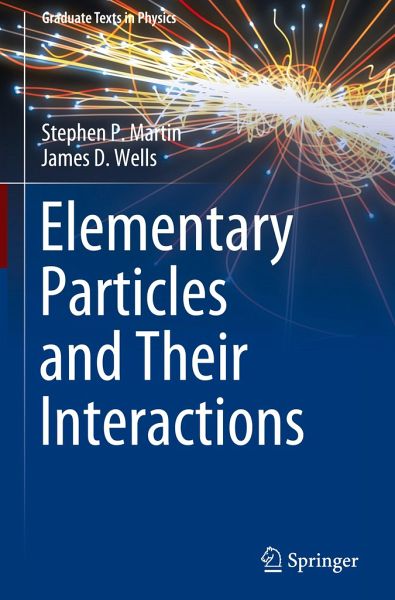
Elementary Particles and Their Interactions
Versandkostenfrei!
Versandfertig in 1-2 Wochen
75,99 €
inkl. MwSt.
Weitere Ausgaben:

PAYBACK Punkte
38 °P sammeln!
The Standard Model of elementary particle physics was tentatively outlined in the early 1970s. The concepts of quarks, leptons, neutrinos, gauge symmetries, chiral interactions, Higgs boson, strong force, weak force, and electromagnetism were all put together to form a unifying theory of elementary particles. Furthermore, the model was developed within the context of relativistic quantum field theory, making it compatible with all of the laws of Einstein's Special Relativity. The successes of the Standard Model over the years have been tremendous and enduring, leading up to the recent discover...
The Standard Model of elementary particle physics was tentatively outlined in the early 1970s. The concepts of quarks, leptons, neutrinos, gauge symmetries, chiral interactions, Higgs boson, strong force, weak force, and electromagnetism were all put together to form a unifying theory of elementary particles. Furthermore, the model was developed within the context of relativistic quantum field theory, making it compatible with all of the laws of Einstein's Special Relativity. The successes of the Standard Model over the years have been tremendous and enduring, leading up to the recent discovery and continuing study of the Higgs boson.
This book is a comprehensive and technical introduction to Standard Model physics. Martin and Wells provide readers who have no prior knowledge of quantum field theory or particle physics a firm foundation into the fundamentals of both. The emphasis is on obtaining practical knowledge of how to calculate cross-sections and decay rates. There is no better way to understand the necessary abstract knowledge and solidify its meaning than to learn how to apply it to the computation of observables that can be measured in a laboratory.
Beginning graduate students, both experimental and theoretical, and advanced undergraduate students interested in particle physics, will find this to be an ideal one-semester textbook to begin their technical learning of elementary particle physics.
This book is a comprehensive and technical introduction to Standard Model physics. Martin and Wells provide readers who have no prior knowledge of quantum field theory or particle physics a firm foundation into the fundamentals of both. The emphasis is on obtaining practical knowledge of how to calculate cross-sections and decay rates. There is no better way to understand the necessary abstract knowledge and solidify its meaning than to learn how to apply it to the computation of observables that can be measured in a laboratory.
Beginning graduate students, both experimental and theoretical, and advanced undergraduate students interested in particle physics, will find this to be an ideal one-semester textbook to begin their technical learning of elementary particle physics.


